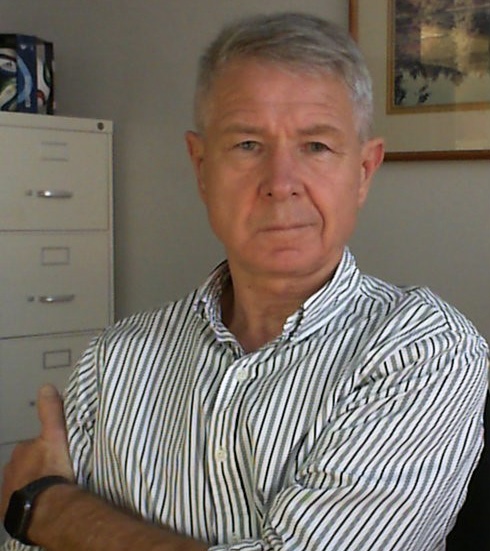Elucidating Neurocognitive Effects of Anesthesia
An Interview with SmartTots Investigator: Dr. Anatoly E. Martynyuk
 Anatoly E. Martynyuk, PhD, DSc
Anatoly E. Martynyuk, PhD, DSc
Professor of Anesthesiology and Neuroscience
University of Florida
Gainesville, FL
Abstract Title:
Neonatally sevoflurane-exposed and unexposed male rat cagemates affect each other’s neurodevelopmental phenotypes
Category: Neuroscience in Anesthesiology and Perioperative Medicine
Poster #: 60
First Author and PhD Candidate Ling-sha Ju, MD, presented their research during the IARS 2023 Annual Meeting at the following times.
Poster Presentation:
Poster Session H, Saturday, April 15, 3:00 pm – 4:00 pm MT, Centennial A-D, The Hyatt Regency Denver at Colorado Convention Center
Oral Presentation:
Kosaka Best Abstracts Awards Session, Sunday, April 16, 2023, 9:30 am – 11:00 am, Centennial E-H, The Hyatt Regency Denver at Colorado Convention Center
Inside and outside the laboratory, Anatoly E. Martynyuk, PhD, DSc, is analyzing and investigating every situation for better understanding. As a Professor of Anesthesiology and Neuroscience at University of Florida, Dr. Martynyuk brings this inquisitiveness into his research of neuroscientific complexity, searching for opportunities for translational impact. In his current research project, he took conclusions from a human study of twins to investigate a new, innovative angle of early-life exposure to anesthesia in rats. He hopes that this study will contribute to understanding the mechanisms underlying higher rates of neurodevelopmental disorders in siblings, cognitive abnormalities in couples, and such phenomena as stress contagion and stress buffering. Below, he contemplates his research findings and how they may impact the future of anesthesiology and patient care.
1. For this research, you are…
Principal Investigator
2. What drew you to the anesthesiology specialty?
I am a neuroscientist by training and anesthesiology is, at its heart, applied neuroscience.
3. What drew you to this area of research?
Neuroscientific complexity and the potential for translational impact.
4. What are the goals you most want to accomplish in your work with this research project (or projects)?
The overarching goal of our research program is to improve the safety of general anesthesia. An example could be a potentiation of inhibitory effects of GABAergic anesthetics through modulation of activity of chloride ion transporters that may allow both enhancement and weakening of sedative and neurotoxic outcomes, respectively.
5. What is the potential impact of your research on the field of anesthesia and patient care?
The brain is an anesthetic target and as we are learning there are acute expected effects and an evolving understanding of the unexpected ones: epigenetic, endocrine, behavioral, intergenerational, and maybe even “social.” Our current study in rats was inspired by human twin studies. Those human studies found similar neurocognitive abnormalities in twins discordant for early-life exposure to anesthesia and, therefore, made a conclusion that preexisting conditions, not the anesthesia exposure, caused the abnormalities. Contrary to our initial pessimism about the possibility of inter-cagemate transmission of sevoflurane-induced abnormalities, the gene expression, neuroendocrine, and behavioral measurements revealed that cohoused neonatally sevoflurane-exposed and unexposed cagemates exhibited the same deficiencies. Our findings that sevoflurane-induced neurobehavioral abnormalities can be transmitted between cohabitating rats suggest that anesthesia exposure may be a factor in outcomes of the above-mentioned human studies. Our findings highlight that effects of general anesthetics are a powerful experimental tool for basic and clinical neuroscience and psychiatry. They may contribute to understanding the mechanisms underlying higher rates of neurodevelopmental disorders in siblings, cognitive abnormalities in couples and such phenomena as stress contagion and stress buffering. More generally, studies in my laboratory underscore the importance of investigating the interaction between diseases, surgery and anesthetics in elucidation of neurocognitive effects of anesthesia. Furthermore, they point to concerns that such effects may be heritable.
6. What are the benefits of presenting your research during poster sessions at the IARS Annual Meeting?
IARS provides a large international audience with pertinent professional expertise that is capable to provide: 1) objective critique of the data to be presented; and 2) diverse ideas for follow-up projects.
7. Is there anyone else you wish to acknowledge as part of this research team?
My PhD student and first author, Ling-sha (Lisa) Ju, MD, and the rest of our research team, Drs. Tim Morey, Nikolaus Gravenstein, Christoph Seubert, Barry Setlow and Terrie Vasilopoulos, have been instrumental in this and many other projects in my lab. I am very grateful to our University of Florida Department of Anesthesiology for creating excellent conditions for fundamental and translational research and the NIH for continuing support.
8. Outside of your research, what might someone be surprised to learn about you?
I view an inquisitive outlook as a way of life. Therefore, the state “Outside of my research” may not exist.
“The overarching goal of our research program is to improve the safety of general anesthesia. An example could be a potentiation of inhibitory effects of GABAergic anesthetics through modulation of activity of Chloride ion transporters that may allow both, enhancement and weakening of sedative and neurotoxic outcomes, respectively.”
– Anatoly E. Martynyuk, PhD, DSc, SmartTots Investigator
International Anesthesia Research Society
